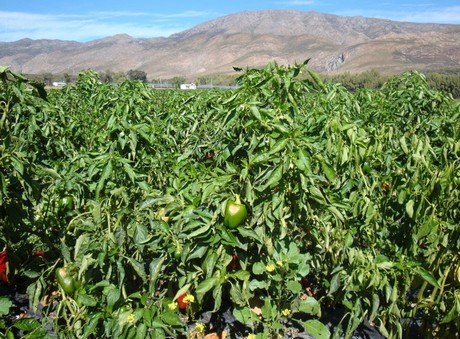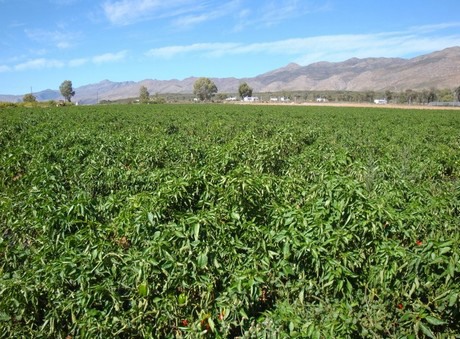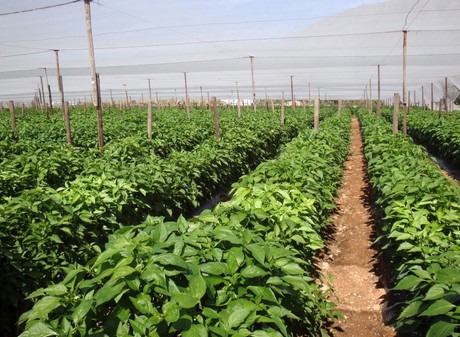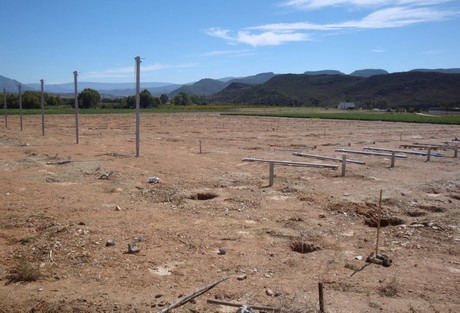
“Because of water shortages in this area, people are looking into all sorts of water-saving methods,” said Hugo, co-owner and operator of their Rietvlei Trust Farm in South Africa. “I think that greenhouses, both standard or retractable, will be one of those methods.” He sees lots of potential for the role retractable greenhouses can play in dealing with the unique problems that his growing climate offers. In addition to the conservation benefits, they initially invested in protected shade growing in order to grow a wider variety of peppers that wouldn't normally grow in the hot Western Cape climate."
“We now grow green peppers on 6 hectare in the open field. We ran into a lot of challenges when we cultivate peppers. It's too hot to do red peppers in open fields,” said Hugo. “The red ones burn before they get to the right color. The overheating due to sunburn disables the fruit for proper calcium intake, which is one of our main problems in pepper cultivation. In certain years it can lead to a loss of nearly 20 %. The crop is also more susceptible to insect and bacterial damage and is s just allover a weaker plant.”

Polish the peppers
Next to this, Hugo also noted the hard wind as an obstacle. “We do get a lot of wind which reults in damage to our crop. It also makes the fruit dirty, there is a lot of dust on it. Thats why we always have to polish the peppers with our hand after we have picked them”But with shade growing, The Rietvlei Trust Farm will be able to grow better quality peppers, and with a new 2 hectare retractable rooftop greenhouse that's almost finished, they will be able to grow an even wider assortment of peppers.

“We're hoping that we can start growing different colors,” said Hugo. That kind of varieties will give them an edge in a market with price fluctuations, and in terms of dealing with the other challenges pepper growers they face, like pests and mildew, he thinks the new addition to their farm will work out well.
“We take the packed peppers to the local market every night, but the distance to our market in Cape Town is over 400 kms, which is quite a big cost factor”, Hugo noted. “Then the price fluctuates between R18 – R80 for green peppers, for the same quality, quite difficult to decide. But that is the case with all vegetables, it is a manner of supply and demand. Next to this the markets arent steady. If something is profitable one year, everybody jumps on the bandwagon the next year! With the new greenhouse, we hope that we can offer a special product on the market to distinguish ourselves from other farmers.”

Global Gap
Regarding the still fairly new Global Gap requirements for South African farmers, Hugo noted that the number of changes that had to be made affected a lot of farmers. “It is quitte costly, our workers even had to acquire driving licenses which was never needed on a farm. The farmyard had to be changed, glass windows removed, gasoline storages changed etc. Most people did not receive it very well, but after implementing it, we do realize that it was necessary and the changes will make the sector and industry stronger and better in the end.”










